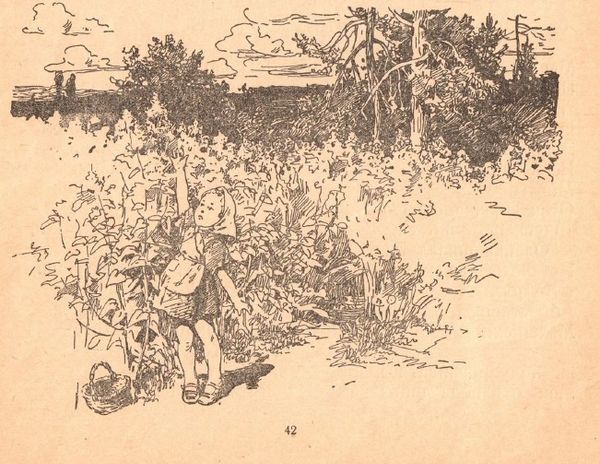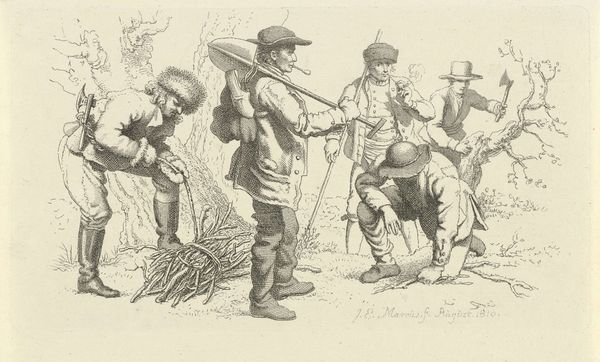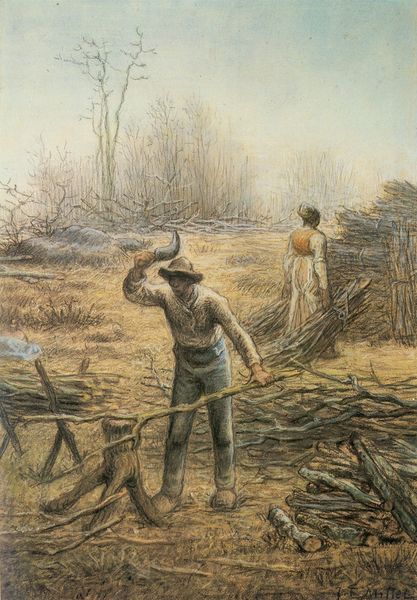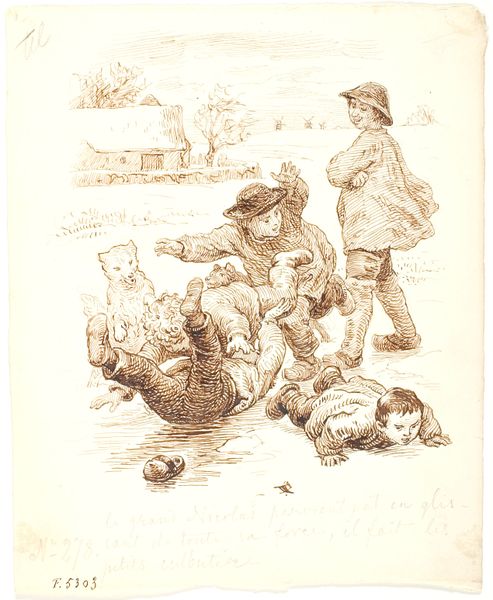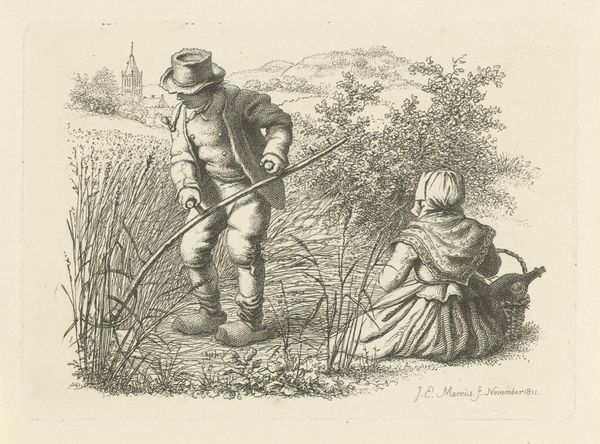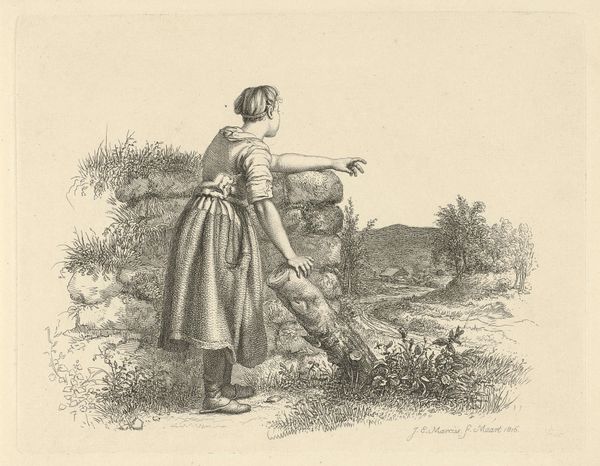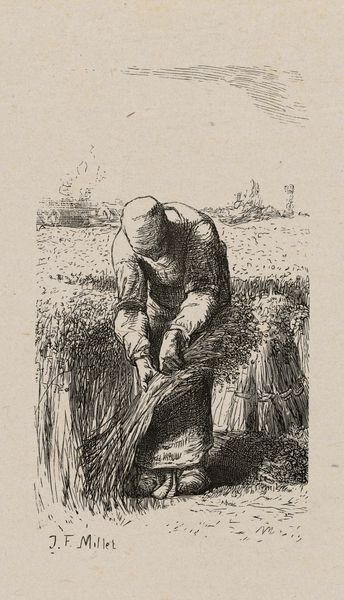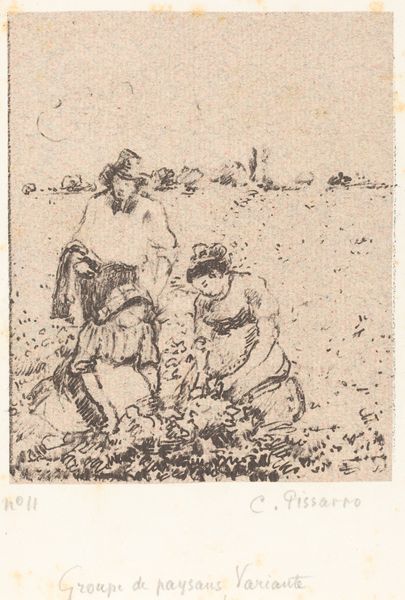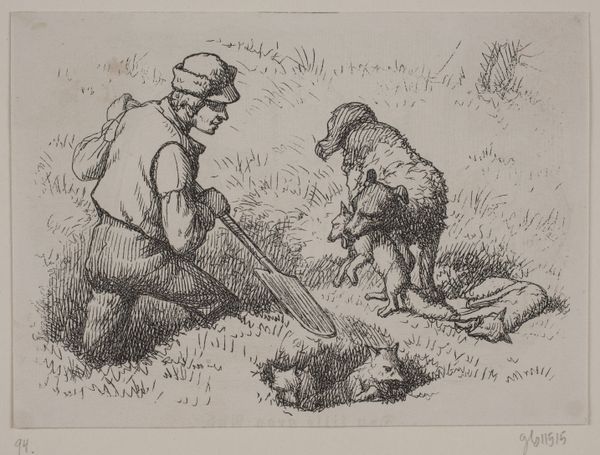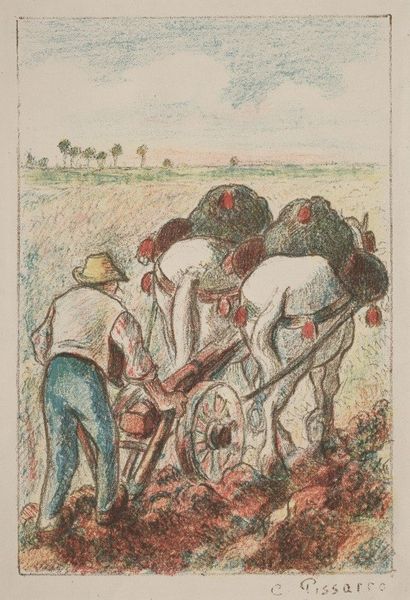
Copyright: Public Domain: Artvee
Curator: Jean-François Millet's "La Lavandière," a coloured-pencil drawing dating to around 1860, presents us with a snapshot of rural life. My eye is drawn immediately to the earth tones, it gives off this sense of a hot summers day near a river. The scene is peaceful, yes, but feels burdened at the same time. Editor: Indeed, the color palette lends a kind of hazy timelessness to the work. But looking closer, that "peaceful" scene is really charged with meaning when we consider the historical context. Laundry, for centuries, was the work of poor women; this scene depicts labor, and, crucially, gendered labor. Curator: Yes, precisely, one can sense this weight of societal expectation; she is bent over a washing board near the river as her daily chore. However, for me it feels also like her element somehow, in nature, where I assume she seeks the inner peace she can’t access doing any other chore at home. There’s a quiet dignity to the woman, a silent protest almost to a never-ending cycle. Editor: That cycle is very precisely visualized. Look at the placement of figures; there’s a direct line between the seated children, to the right, and that lavandière performing her labor. The artwork silently tells that tomorrow those children are going to be next on that woman's place. Those children are just next in line to be oppressed under harsh societal expectations and labor laws. The ducks also echo that silent repetition and life cycle! It's class struggle captured in colored pencil. Curator: Ah, it's a point well-taken, how the piece invites such an interrogation of social structure. But to only perceive it through this heavy theoretical lens perhaps misses the beauty of its intimate and tender, nearly idyllic nature. The textures—the strokes conveying sunlight glinting off of the water, or a certain rough warmth in the fabrics... to ignore that feels, in a way, like losing a piece of the piece itself. It makes me wonder, does assigning the role of oppressor or victim truly allow a deeper level of appreciation? Editor: I hear your point about artistic enjoyment. However, engagement with historical and contemporary oppressions gives dimension and impact to it. Art can show you its face beauty. Art can teach you to transform social awareness into actions and to engage more responsibly with others and your surroundings. This artwork and the beauty within that exists for and by it, allows one to visualize the past with more understanding and to feel connected to those fighting nowadays for better social conditions for everyone, like better work laws for woman! Curator: I think that connection you feel is what strikes me deepest now. This wasn't just some idealized landscape; it's connecting to people who felt the sun on their backs, dealt with the heavy burdens of the labor class, just as it does to woman rights activist that continue in similar form of struggles these days. It’s an incredible bridge across time, culture, and, really, life itself. Editor: And hopefully a stepping stone for those to come. It is essential to revisit artworks with open minds, integrating art history and feminist thinking, that gives you power in this current society that's only in your hands.
Comments
No comments
Be the first to comment and join the conversation on the ultimate creative platform.
